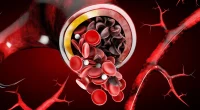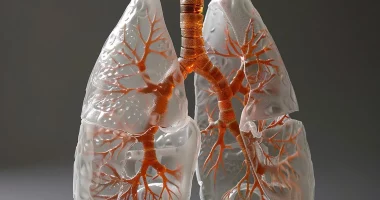Calcinosis cutis is when calcium crystals build up in your skin, forming hard bumps that don’t go away. The bumps can vary in shape and size.
This is an uncommon condition with many possible causes, such as infections, injuries, or diseases such as kidney failure.
Sometimes calcinosis cutis doesn’t cause any symptoms, but it can be painful in some cases. Treatments, including surgery, are available, but the bumps might come back.
Current treatments can help manage the buildup of calcium in the skin and the hard bumps that form. New treatments are also being grown. It’s best to talk to your healthcare provider about any symptoms and treatment options
Types
Calcinosis cutis comes in five main types:
- Dystrophic Calcification: This is the most common kind. It happens when calcium builds up in areas of the skin that have been inflamed or damaged. This type doesn’t involve any unusual levels of phosphorus or calcium in the body; it’s just the result of local skin damage.
- Metastatic Calcification: This type occurs when there are high levels of calcium and phosphorus in the blood. It can affect various parts of the body, not just areas of skin damage.
- Idiopathic Calcification: In this type, the cause of the calcium buildup is unknown. It usually appears in just one specific area of the body without any clear reason.
- Iatrogenic Calcification: This kind of happens as a result of a medical procedure or treatment, often by mistake. For example, newborns might develop iatrogenic calcification on their heels from multiple blood tests.
- Calciphylaxis: This is a serious and rare type, mostly seen in individuals with severe kidney problems, like those who are on dialysis or have had a kidney transplant. It affects the blood vessels in the fat layer or skin and is associated with abnormal levels of phosphate and calcium in the body.
Symptoms
The symptoms of calcinosis cutis can vary depending on what’s causing it. Here’s what to look for:
- Appearance: The condition usually causes whitish-yellow, hard bumps to form on the skin. These bumps develop slowly and can be of different sizes.
- Location: The bumps can appear anywhere on the skin, depending on the cause of the condition.
- Symptoms: Often, these bumps don’t cause any symptoms at all. However, they can sometimes be painful or release a whitish, sticky substance. In a few rare cases, the bumps can become very serious and potentially dangerous.
The impact of calcinosis cutis on your health can vary from mild and harmless to severe, depending on the specific case.
Causes
Calcinosis cutis is an uncommon condition with various underlying causes, depending on its subtype.
Dystrophic Calcification is the most common type and generally results from tissue damage. When cells are damaged or die, they release phosphate proteins, which then calcify and form calcium salts. This type of calcification can be triggered by infections, acne, tumors, or connective tissue diseases like systemic sclerosis, lupus, and dermatomyositis.
Metastatic Calcification occurs when there are abnormally high levels of calcium and phosphate in the body. This excess calcium can form nodules on the skin. Common causes of elevated calcium and phosphate levels include chronic kidney failure, excessive vitamin D intake, hyperparathyroidism (an overactive parathyroid gland), sarcoidosis (a condition where inflammatory cells form in various parts of the body), Paget’s disease, and milk-alkali syndrome.
Idiopathic Calcification is characterized by calcium deposits with no known cause or basic tissue damage. This type of calcinosis cutis occurs without abnormal phosphorus or calcium levels. It includes three kinds: familial nodules, subepidermal nodules, and scrotum nodules.
Iatrogenic Calcification results from medical procedures that unintentionally cause calcium deposits as a side effect. Although the exact mechanism is not well understood, it can happen from the management of solutions containing phosphate and calcium, prolonged exposure to calcium chloride electrode pastes throughout electromyograms or electroencephalograms, intravenous calcium treatments, or heel sticks in newborn babies.
Calciphylaxis is a very rare form of calcinosis cutis with an uncertain cause. It is often associated with chronic kidney failure, diabetes, obesity, and hyperparathyroidism.
Diagnosis
To determine the kind of calcinosis cutis and choose the best treatment, your healthcare provider will start with a thorough examination and review your medical history. They will ask about your symptoms and any relevant details about your health.
Several laboratory tests will be ordered to identify the primary cause of your condition. These may include:
- Blood Tests: To check for abnormal levels of calcium and phosphate, look for markers related to lupus and tumors, and evaluate vitamin D and parathyroid levels.
- Metabolic Tests: To eliminate kidney issues that might be contributing to the condition.
- Imaging Tests: CT scans, X-rays, or bone scans will help assess the spread of calcification in your body.
- Biopsy: A sample of the lesions may be taken to examine them more closely.
- Specialized Tests: Additional tests might be conducted to check for specific conditions like dermatomyositis and milk-alkali syndrome.
A promising new technology in development is advanced vibrational spectroscopy. This technique uses Fourier transform infrared or Raman spectroscopic analysis to quickly identify the chemical compound of the calcinosis cutis injuries and find the progression of the disease.
Treatment
The treatment for calcinosis cutis varies depending on the primary cause of the condition.
Medications
Different drugs may be used to manage calcinosis cutis, though their effectiveness can be inconsistent. For smaller lesions, medications such as ceftriaxone, warfarin, and intravenous immunoglobulin might be tried. For larger cuts, options include bisphosphonates, diltiazem, aluminum hydroxide, and probenecid. Additionally, a 2003 study found that a low dose of the antibiotic minocycline helped relieve pain and decrease the size of lesions in individuals with CREST syndrome.
Surgery
If lesions are painful, frequently infected, or affect daily functioning, surgery might be suggested. However, there is a risk that lesions could reoccur after surgery. It is generally advised to start with removing a small portion of the lesion to assess the response.
Other Treatments
New treatment options are being explored, such as hematopoietic stem cell transplantation, which replaces damaged blood production cells and has been used for a few autoimmune diseases. Additionally, shock wave lithotripsy and laser therapy are potential treatments under investigation.
Summary
Calcinosis cutis is an uncommon condition characterized by calcium deposits in the skin, with various subtypes based on underlying causes such as tissue damage, high calcium levels, or no known cause. Symptoms include hard, whitish-yellow bumps that may be painless or painful, and can sometimes become severe.
Diagnosis involves a thorough examination, blood tests, imaging, and possibly biopsy. Treatments vary by type and may include medications, surgery, or new methods like stem cell transplantation and laser therapy. Effective management depends on the specific cause and symptoms of the condition.
External links









